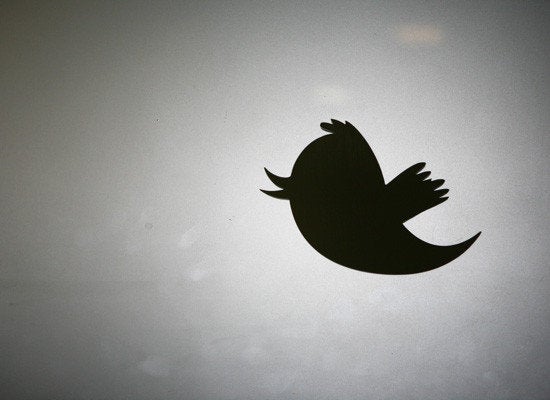
Quantity vs Quality is age-old debate. The question remains: Is more always better?
In high school, one of my classrooms had a poster which read, "More is Always Better!" The illustration underneath was of a small man who was underneath a pile of many elephants and another elephant was about to be loaded on top. That was the first time I remember being intrigued by this conundrum. In school and on the playground, we are taught that more is always better!
The argument is revived in another iteration, this time with regard to social media. As sometimes happens on the playground, each of us spends time and effort gathering likes, followers, friends, comments in a ferocious fury arbitrarily without regard to what each follower or friend may mean to us! It is not until we reach some level of maturity that we realize more is not always better! Popularity among all in the schoolyard is not nearly as rewarding or beneficial as specific relationships where we share similar ideas, passions and goals. Just as it takes maturity on the playground for this realization, the social media paradigm can only change when it grows up.
"The last time I checked, banks were still refusing to accept deposits of Twitter folllowers -- you can't take online buzz to the bank" says Jaime Fitzgerald, founder and president of Fitzgerald Analytics. He went on to say, "Ironically but inevitably, the key measure of your social media success is offline: how many new clients did you gain? how much new profit did you drive as a result of your online presence?"
This is an potential business obstacle for me and others who are seeking clients who are financial services professionals. This people want to see the numbers. For serious people with serious business goals, it is still quite foggy about which social media metrics should matter? For example, how should a wealth manager measure the success of their social media efforts? Or a lawyer? Or me, for that matter? My own experience has led me to the conclusion that less is more when the quality is apparent. What is quality? Its a bit like pornography; you will know it when you see it. I would rather have fewer close friends than many acquaintances. I want fewer, longer, stronger, and deeper clients rather than multiple, more shallow business relationships.
This online influence conversation has led to the creation of start-ups seeking to measure one's online influence more effectively, most notable among the start-ups is Klout. While Klout's metrics are a step forward, but they still don't come anywhere near what I would like to eventually measure in terms of "return on investment" for social media marketing, much less the question of which online activities deliver the most "bank for the buck!" While in this state of immaturity, my mantra to clients is: consistent and constant messaging will create the most visibility . We will have to wait for the metrics to catch-up. Get cracking, Jaime!
That's why for a "place" like "Twittersphere" quality is a quiet, solid argument below the noise of those frenetically gathering followers. Unless you are Charlie Sheen, nobody will pay you based on your number of Twitter followers. The end game is not about how many followers we have, its about how we engage in real-life (IRL) on real-topics of real interest so that we can prove value that people are willing to pay for. That we can take to the bank! Social media might connect us with many more people but the ability to monetize relationships is still dependent on the way we build relationships, trust, credibility and dialogue. It is these activities which translate into offline actions, offline dollars, and many more offline trips to the bank!
So, what's wrong with gathering-type activities which harvest lots of followers? Isn't it better to have more people tuned into your message? For the answer, I went back to Jaime. "It depends on your business model," Fitzgerald says, "if your business model depends on authentic relationships, on credibility, on influencing the offline world, that does not scale in a linear fashion. For most professionals, and even many corporations, quantity is over-rated."
To illustrate that point, let's look at some highlights from a Twitter analysis which Fitzgerald and his team have recently performed. This was done using publicly available data on Twitter users, their followers and their interactions.
Jaime says that follower count alone is a poor proxy for influence in the real-world. Let's look at those who are already influential. Most of Time Magazine's list of 100 most influential people have modest numbers of followers on Twitter, if they tweet at all. A few examples:
1.Geoffrey Canada, listed 5th on this year's list, founded the Harlem Children's Zone which serves 8,000 students per year in a 100 block area of Harlem. He has sent just 60 tweets (as @hczorg,) and gathered about 4,000 followers since he began tweeting in March 2011.
2.Peter Vesterbacka, game developer of the wildly successful Angry Birds online game, is listed 7th on this year's list. The game has been downloaded 100 million times. He tweets actively, but has less than 4,000 followers.
3.Pulitzer Prize-Winning Author and Journalist Jennifer Egan does not have a Twitter account.
Next, let's look at the social media path for those not as influential as they would like to be. In this case, social media clearly offers amazing tools to build an online profile or brand. Fitzgerald claims that a relatively small segment of Twitter users seem to get it right. His analysis has identified several pitfalls:
1.Looking like something you are not: i,.e, "self-made social media celebrities" whose online persona does not match the offline needs of their audience. This makes it tough to monetize your audience and tough to close the sale offline.
2.Over-investing time and energy in social media without clear plans and measurement.
3.Over-investing in gathering followers and under-investing in engagement with ideal future clients. As follower counts go up, several key signs of engagement tend to decline including:
a. The proportion of followers with whom you have never interacted (i.e. retweeted,
mentioned, etc.) tends to rise
b. The likelihood that any interaction will ever occur rises, and
c. The proportion of followers "of uncertain value" rises (i.e., accounts with no clear relevance to the focus of the tweeter, the product or service offered, etc.)
d. Thus, the proportion of inactive followers rises
Clearly, this will never yield the results serious business people are seeking.
So, what does this mean for us who have a firm belief in the ability of the internet and its web of interconnectivity to deliver results at a relatively low price (in time and money) as compared to traditional media results. The issue here is that like other disruptive technologies that I've watched in my career, social media has grown faster than our ability to measure its benefits. Recently, we have witnessed the sheer viral power of social media -- celebrity amplified, regimes toppled, new products launched, careers enhanced -- but we still don't have agreement nor a reliable way to quantify progress.
We will play on the offline playground and the online social media platforms while waiting for social media metrics and analytics to grow up. When that happens, just as on the playground, we won't be concerned with the number of friends but seek to grow and retain those who provide more profitable, satisfying and engaging long-term relationships.
Related
Sign up for Peacock to stream NBCU shows.
to stream NBCU shows.
